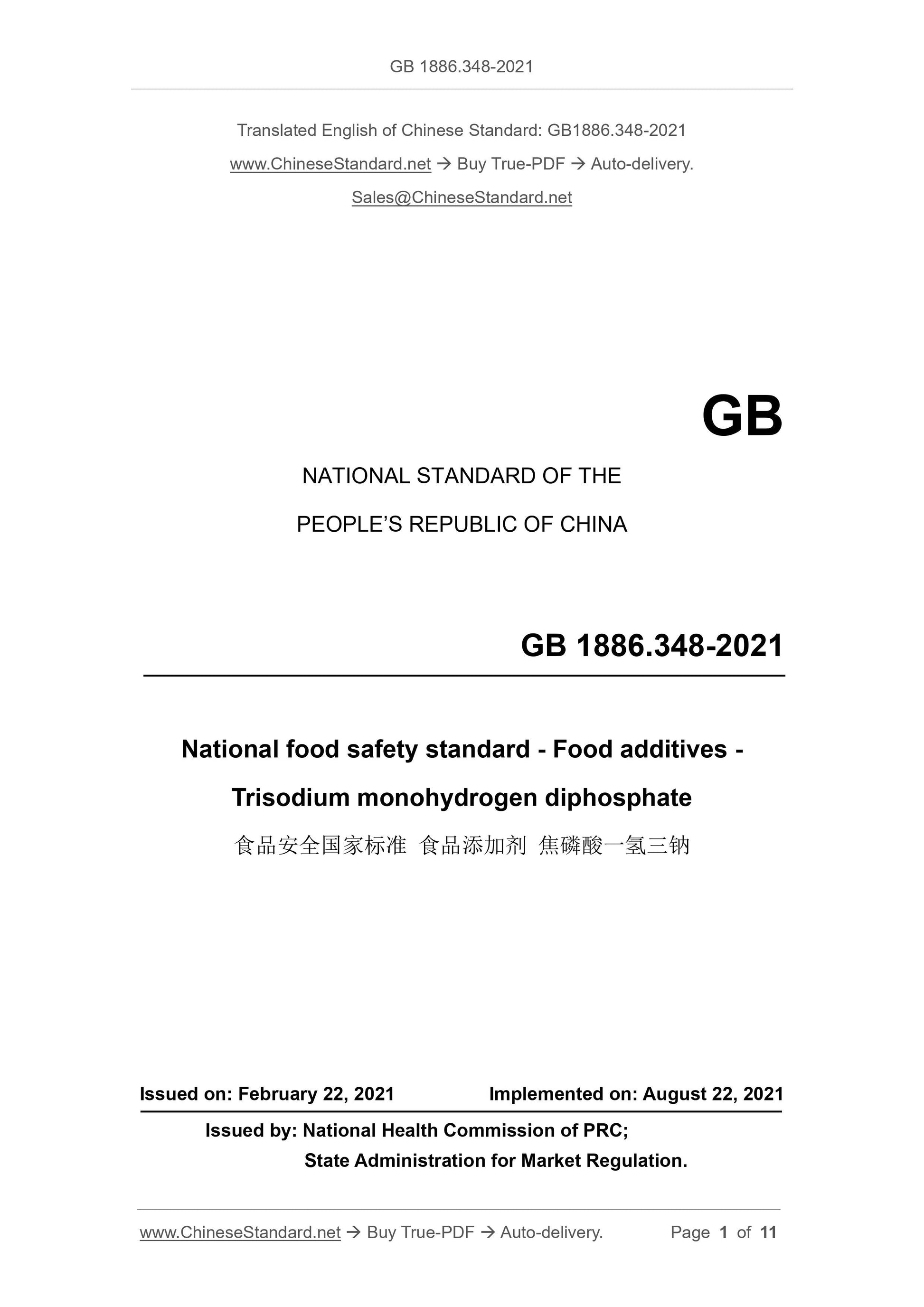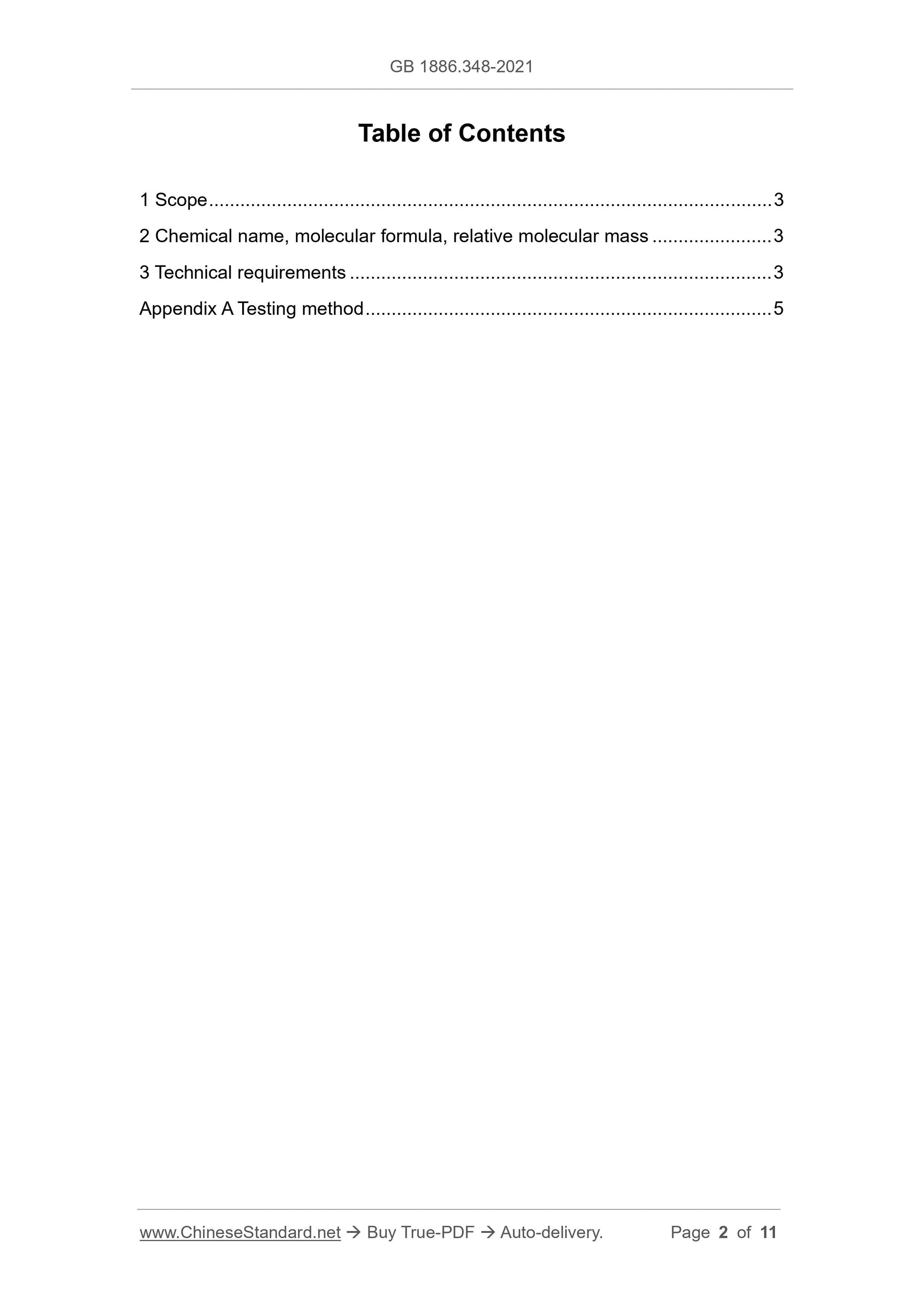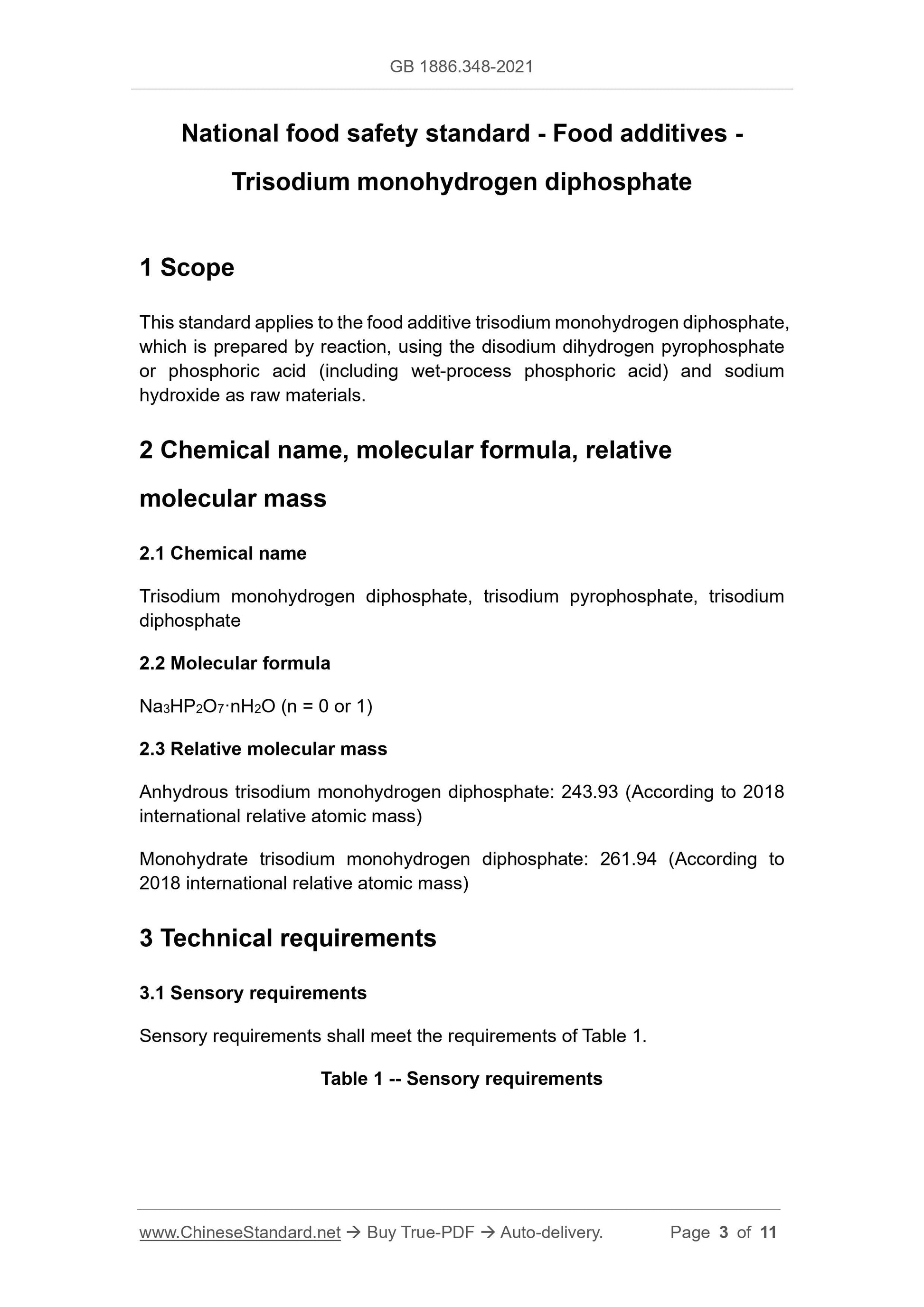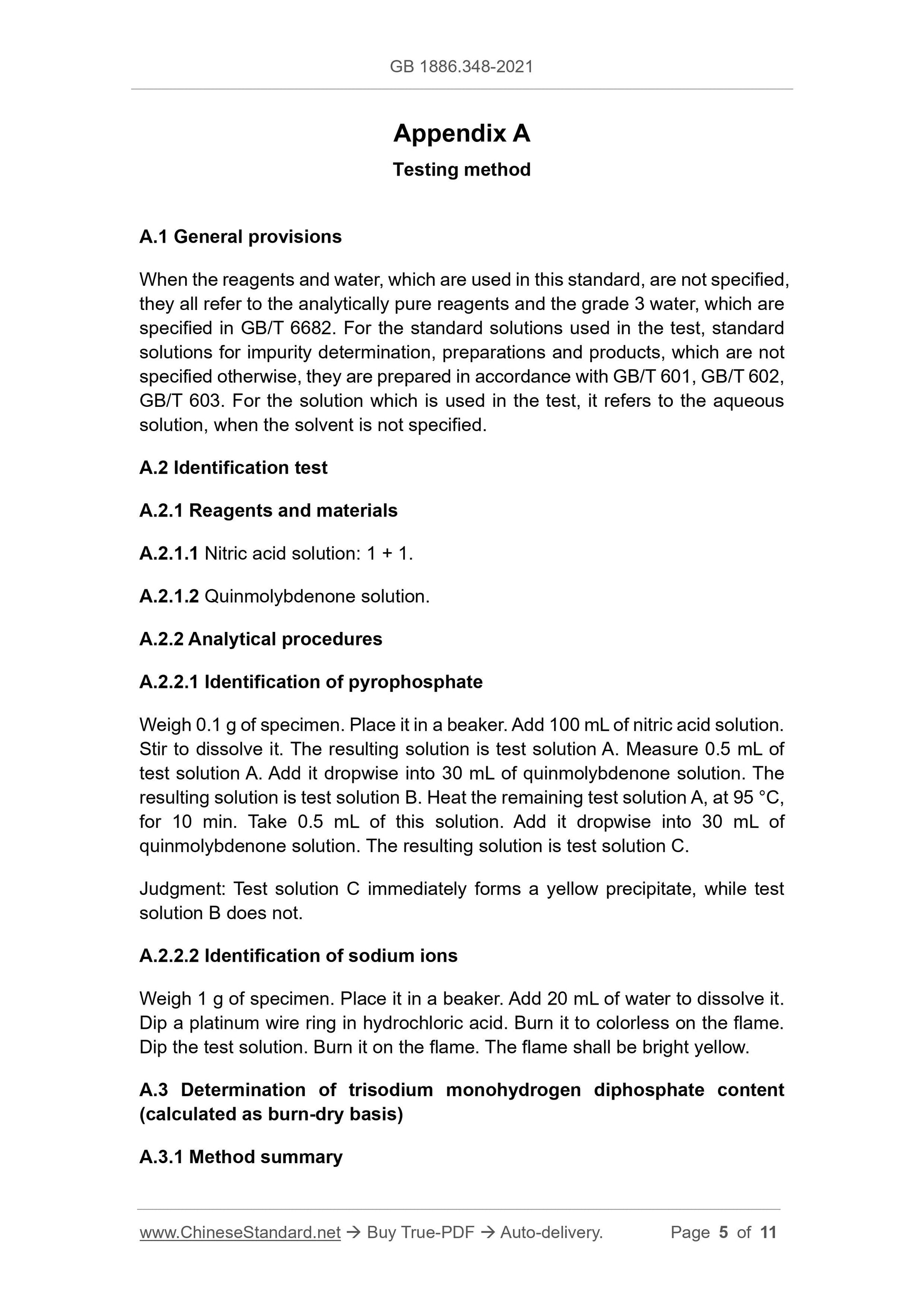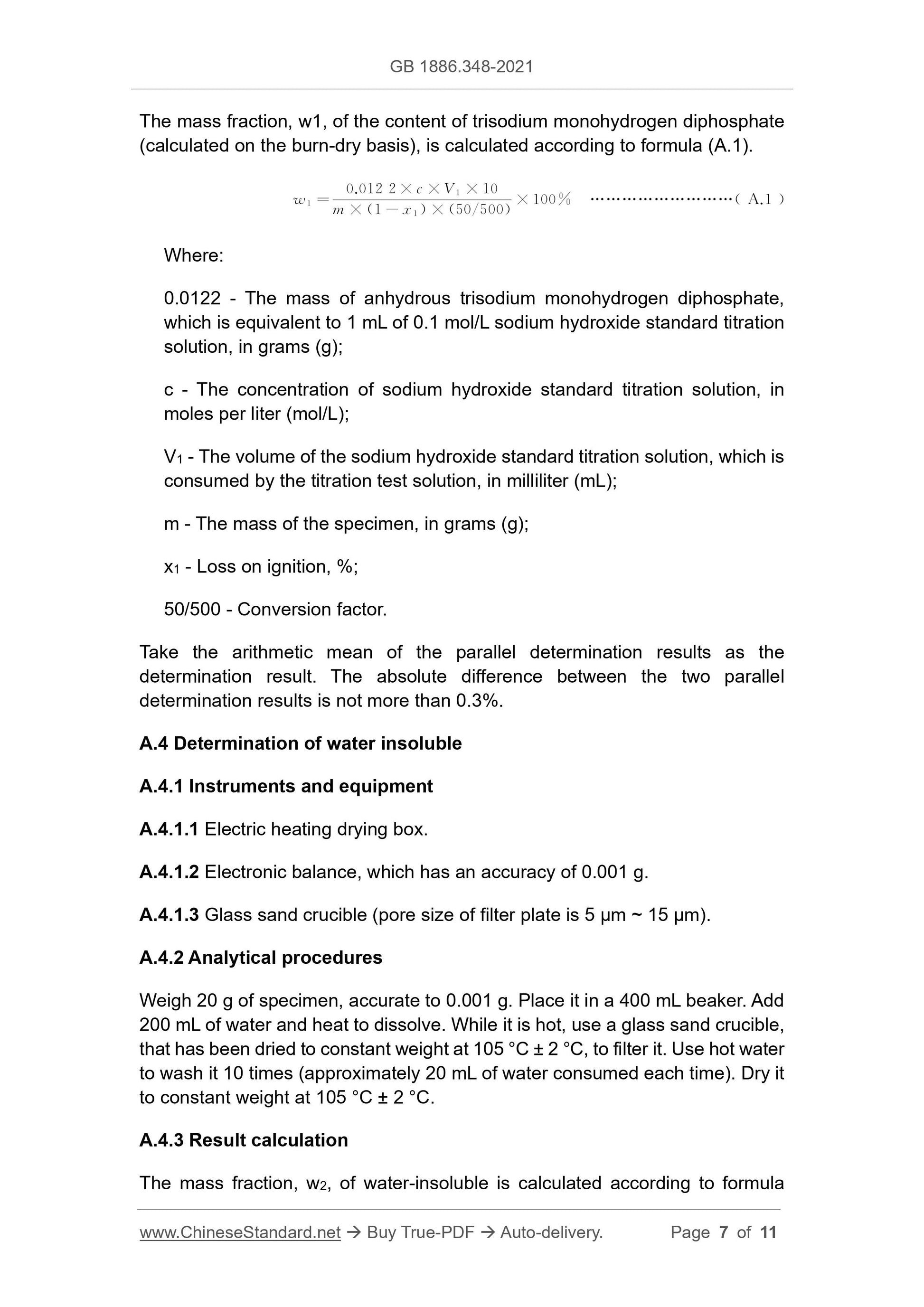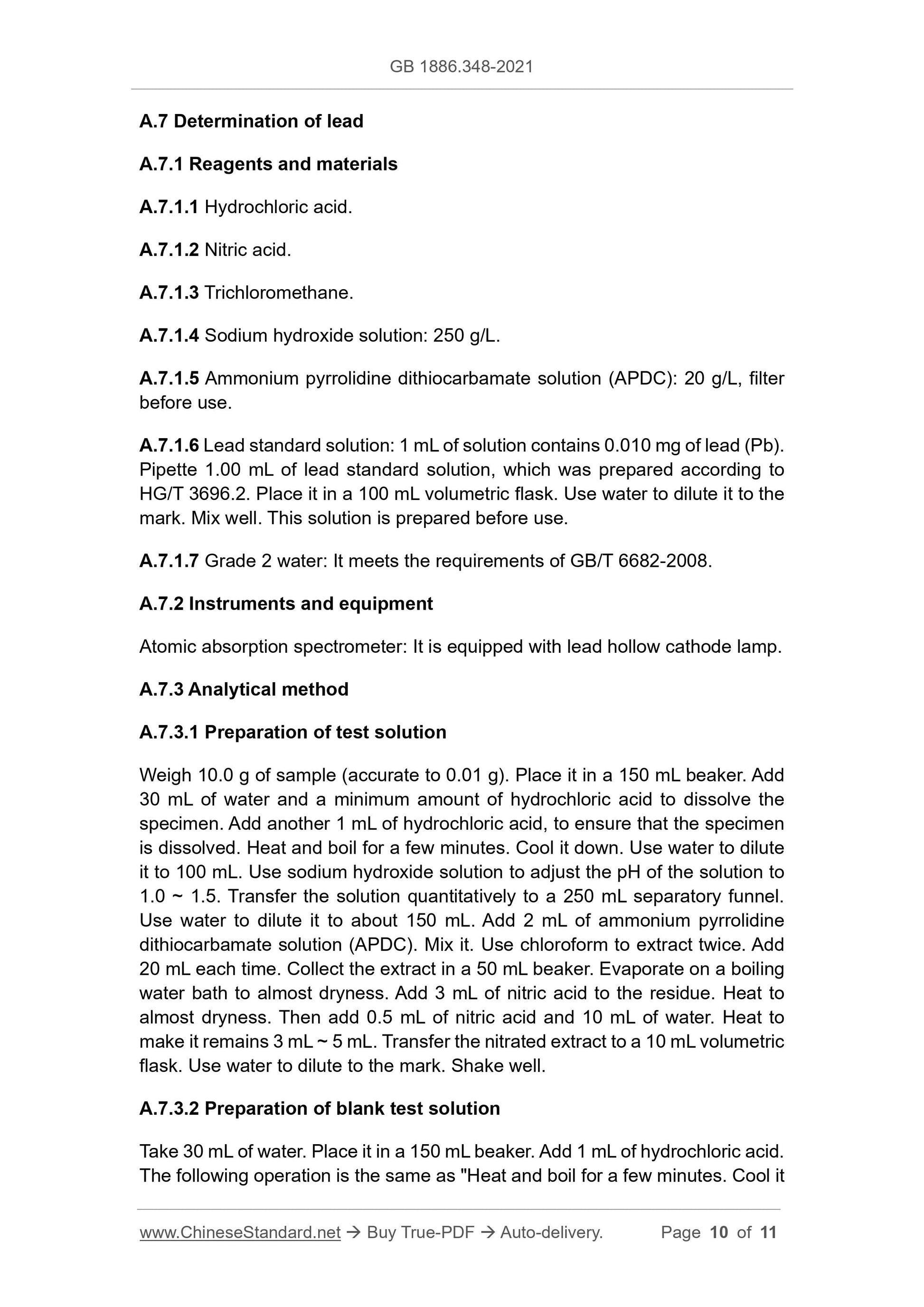1
/
of
6
www.ChineseStandard.us -- Field Test Asia Pte. Ltd.
GB 1886.348-2021 English PDF
GB 1886.348-2021 English PDF
Regular price
$125.00
Regular price
Sale price
$125.00
Unit price
/
per
Shipping calculated at checkout.
Couldn't load pickup availability
GB 1886.348-2021: National food safety standard - Food additives - Trisodium monohydrogen diphosphate
Delivery: 9 seconds. Download (and Email) true-PDF + Invoice.Get Quotation: Click GB 1886.348-2021 (Self-service in 1-minute)
Newer / historical versions: GB 1886.348-2021
Preview True-PDF
Scope
This standard applies to the food additive trisodium monohydrogen diphosphate,which is prepared by reaction, using the disodium dihydrogen pyrophosphate
or phosphoric acid (including wet-process phosphoric acid) and sodium
hydroxide as raw materials.
Basic Data
| Standard ID | GB 1886.348-2021 (GB1886.348-2021) |
| Description (Translated English) | National food safety standard - Food additives - Trisodium monohydrogen diphosphate |
| Sector / Industry | National Standard |
| Classification of Chinese Standard | X09 |
| Word Count Estimation | 9,956 |
| Issuing agency(ies) | National Health Commission of the People's Republic of China, State Administration for Market Regulation |
Share






